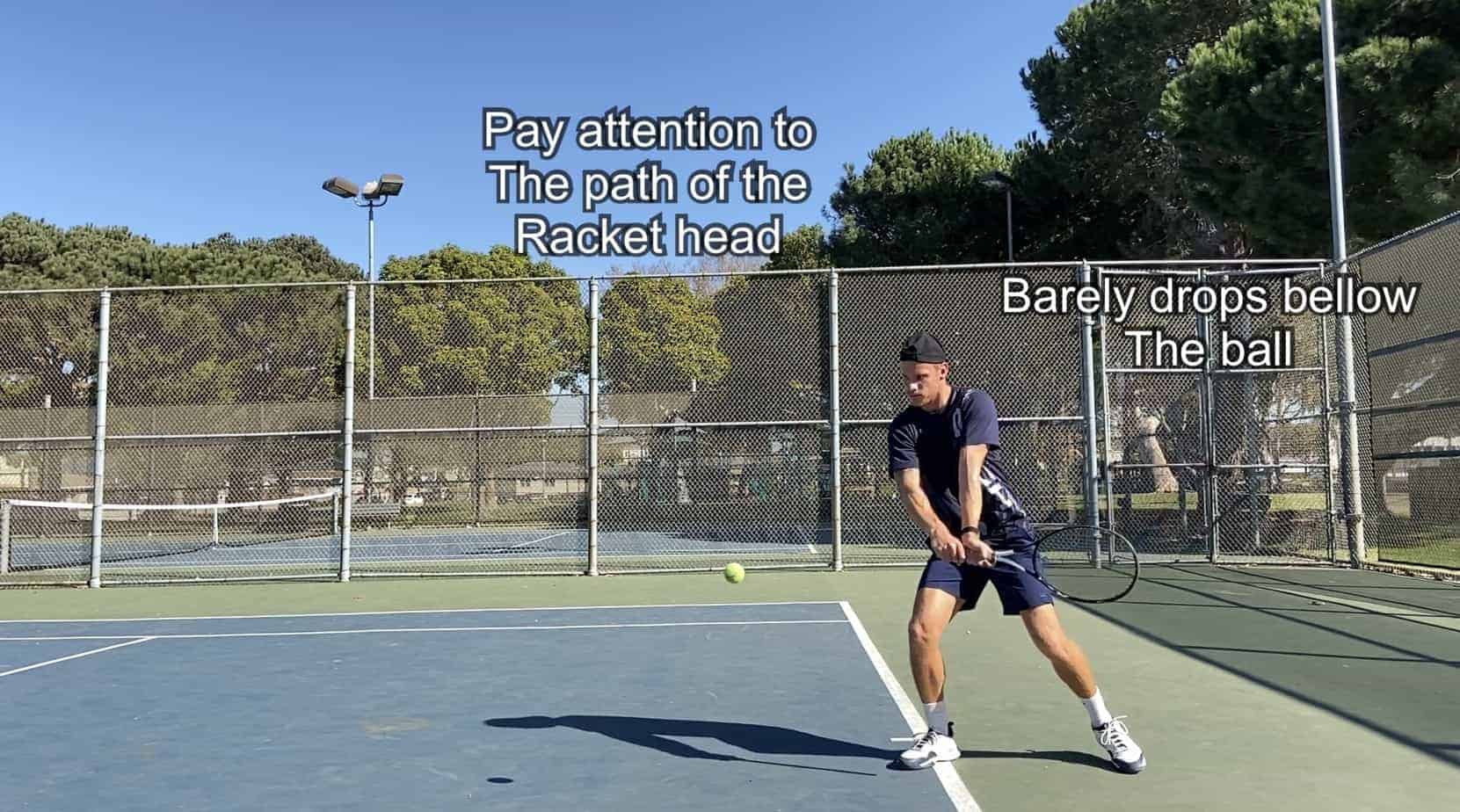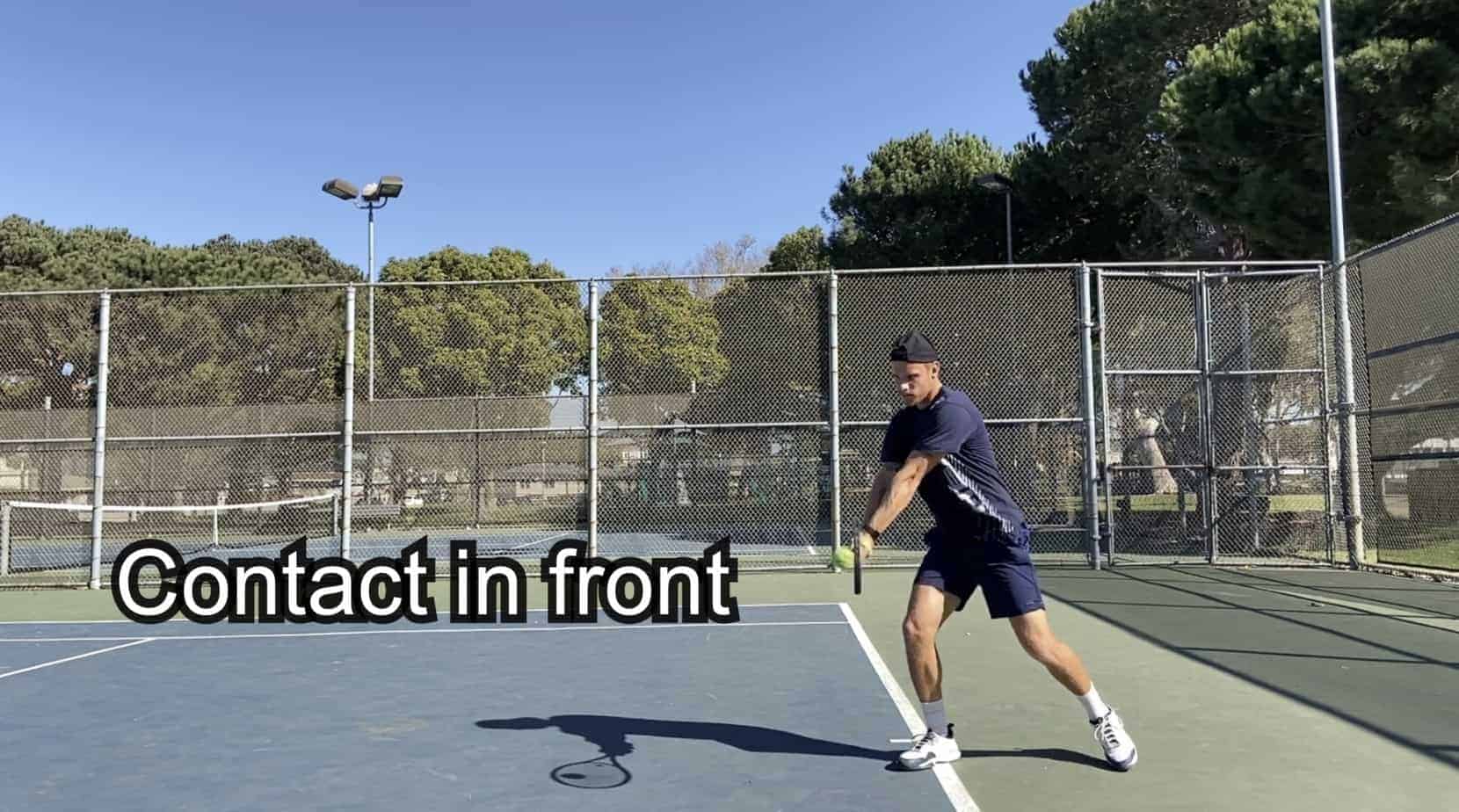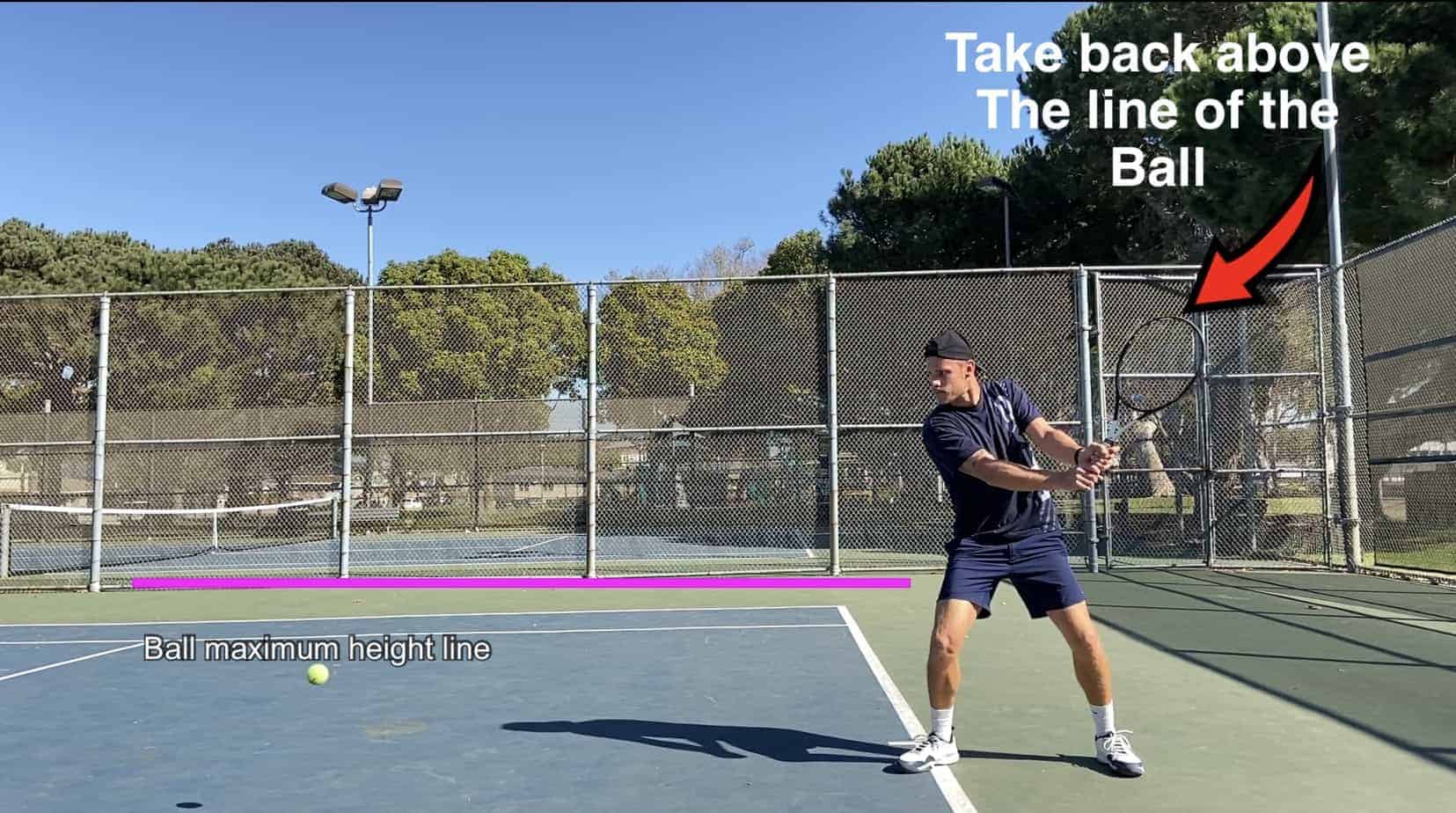If there is something I know about tennis, it is definitely how to hit a backhand. My entire game revolves around setting up a clean backhand down the line. I credit a lot of this to watching (and copying) the best two-handed backhands in the world (Nalbandian, Safin, Djokovic, Murray).
While today we have several good double-handed backhands on the ATP tour, there are a few players who hit what we call the “bunt backhand”. Cameron Norrie, Nick Kyrgios and Alex DeMinaur have some of the most effective bunt backhands on the tour and in this article, I will teach you how to hit a damaging and consistent bunt backhand as well as show you why it is very effective to have this shot in your repertoire.
How To Hit The Bunt Backhand
Before we begin, let me preface by pointing out that this shot is a little bit more advanced. If you are a beginner, you should focus on the basics you are learning right now and save this article so you can read it later in your career. We have an awesome complete guide on how to hit backhands, and you can check it out here Tennis Backhand – The Ultimate Guide.
For intermediate and advanced players, this is a fairly simple shot to add to your game. Let’s take a closer look:
Step by Step on How to Hit the Bunt Backhand:
- THE TAKE BACK
- as you take back your racket to prepare for your shot, make sure the racket head is higher than the line of the ball (this will be more clear in a moment).
- BODY POSITIONING
- Ideally, you want to hit this shot close stance (right foot in front if you are a righty). Make sure your center of gravity is low and you have a good lean towards the ball. If you try to hit flat falling backward, you will most likely miss.
- RIGHT BEFORE CONTACT
- before making contact with the ball, there are two things you need to pay attention as you start to move your racket forward
- Unlike most shots, the head of the racket will not come from a low to a high position. Generally, you want the racket head to move towards the ball around the same height as the ball that was hit to you.
- Make sure your left wrist is very firm. We want the least amount of wrist movement in order to execute this shot precisely. Feel like you are locking the left wrist and pushing the head of the racket with your left hand’s palm (see image)

- THE CONTACT WITH THE BALL
- as most shots, having a good contact point is key. But when you are trying to hit a bunt backhand it is especially important you focus on the following tips:
- Make contact in front of you so you don’t have to correct the shot direction with your hands
- Make sure your left hand is squeezing the grip very hard during contact. Why is this important? By squeezing the grip, your racket will be more solid and move less during the impact. Another benefit is that the duration of the contact between the racket and the ball will be longer, which will give you more control.
- Again, try to keep the ball in touch with your strings for as long as you can, this will give more control. Because you aren’t hitting with too much spin, you need to focus on controlling the ball.

- THE FOLLOW THROUGH
- after you make contact with the ball do the following:
- Immediately after you make contact with the ball, your racket needs to start moving up. There is a misconception where players believe hitting flat = swinging from high to low. This will make you hit the net. Make sure your racket starts moving upwards after you touch the ball.
- Your left elbow should stay high all the way from your takeaway to the finish. By keeping your elbow high, you’ll limit how much spin you add to the ball as well as having more control of your shots

Video Breakdown
As you can see, it is really important to follow all the steps cited above. In addition to what I explained earlier, pay attention to a couple extra things. First, watch how I have a very strong base. That allows me to use my entire body to absorb the pace of the ball that was hit to me instead of relying on my hands/arms to do so. Second, my right foot is creating forward momentum by pushing the ground. By doing so, I will be stronger through the shot. Lastly, look how the ball flies a little closer to net compared to your typical topspin backhand. That is ok. Try to aim about one foot over the net and follow all the steps I mentioned earlier and you will rock your opponent.
Why is the Bunt Backhand Effective?

In my experience, the bunt backhand has two major benefits. First, when you have control of it, it is a lot easier to absorb pace and change the direction of the ball. Kyrgios has one of the best backhand returns in the game because he has such a short simple motion. And while his forehand is definitely more of a weapon, he is able to move the ball around the court very effectively by absorbing his opponent’s pace and bunting it in different directions of the court.
The other reason the bunt backhand is effective is because it almost acts as it’s own shot variation. Look at Cameron Norrie, for example. His forehand is very heavy and spinny, while his backhand is incredibly flat. His opponents are constantly having to adapt to two different shots, which in the course of a match can be very demanding. Norrie is able to push his opponents back with his heavy forehand and then hit his backhand early and flat. His opponents don’t move only side to side, they also have to move diagonally, which is quite difficult.
How To Train the Bunt Backhand
Get on the court and do it. You will miss a lot at first and you will have a hard time controlling the depth of the shot. Sometimes the ball will just fly off your racket. But keep working on it. It is very important to keep in mind the instructions you read above because your body still doesn’t fully understand how to execute this shot from a muscle memory perspective. I suggest rallying a lot with someone who hits with a fair amount of pace because it will be easier to use their power to drive your backhand back to them.
Is the Bunt Backhand For You?
For the most part, the bunt backhand is not the most technically challenging shot but you need to fit a certain player profile to hit it. Some people are naturally good at generating spin, hitting their shots from low to high and using more wrist. It is important to know yourself as a player. Rafael Nadal could most definitely hit the bunt backhand if he wanted, but he chooses to hit it with more spin because that’s where he is most comfortable and effective. Don’t force the issue, follow the instructions from this article and discover if it is a shot you would feel comfortable hitting during a match.
Common Mistakes When Hitting the Bunt Backhand
- The most common mistake I see from people trying to hit this shot is a swing from high to low. Players often mistake hitting the ball flat as hitting down on the ball. The only outcome from this is that you’ll hit the ball into the net. Instead, make sure you make contact right on the “face” of the ball and have your racket move up afterwards.
- Another mistake is to swing too aggressively at the shot. The bunt backhand requires more finesse than power. You are already hitting the ball flat and through the court, trust that it will do the damage it is supposed to.
- Finally, keep in mind that while the bunt backhand is very effective, you won’t be hitting tons of winners from it. Instead, look for it to be a good set up ball. If you hit it correctly, the bunt backhand will stay low which will make your opponent have to hit up. From there, if the ball allows, you will be able to take a good swing with your forehand (Nick Kyrgios tennis 101)
One Drawback from the Bunt Backhand
The only drawback I see from hitting this shot is hitting it when balls are hit to you low and without pace. Because the shot doesn’t require a lot of spin, it can be a little tricky to lift it up and over the net without missing long or hitting a bad shot right in the middle of the court. To fix this, make sure you get very low with your legs and trust the shot. Aim about a foot over the net and swing confidently. It will take you a little bit of time to nail down the precise strength you need to use to hit a good/deep ball from this position, but like every shot in tennis, practice will make it perfect.
Conclusion
The bunt backhand is one of my favorite shots to hit on a tennis court. It is a fantastic way to break your opponent’s rhythm and it can definitely help players change the ball direction more often from their backhand side. Personally, I think it is important for players to use both topspin and flat backhands during the course of a match because it will keep your opponent on their toes. Also, by owning both shots, you can try things out during the match and see what hurts the other person the most. Once you find the answer, stick to it. Finally, understand that this shot takes a lot of time to get comfortable with, especially during matchplay. But don’t let that scare you off. Learning new shots is a lot of fun and you will love it once you successfully annoy your opponents with your new and improved bunt backhand.


